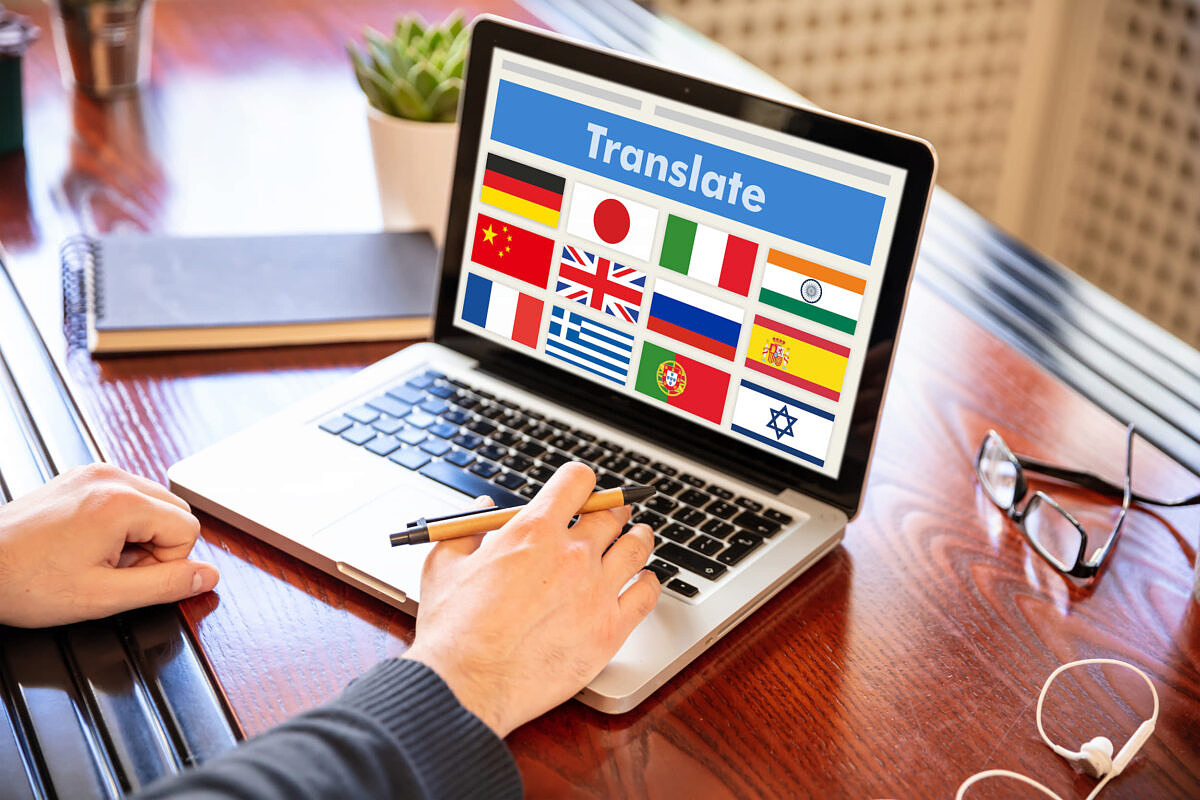Lost in translation: how to avoid embarrassing marketing translation errors
You’ve defined your marketing strategy: you want your product to perform successfully abroad. But then, you get lost in translation. Translation errors can often make your entire brand presence fail. We have some tips on how to avoid them.

Big companies with a tradition of marketing fails
The goal of most companies is to eventually branch out into foreign markets and expand their target groups. A major challenge for marketing teams is translating the core message in an apt way – and all too often it goes wrong.
There is a long history of translation errors leading to notorious marketing fails. As early as the 1930s, Coca-Cola flopped when it translated its product name for the Chinese market. Here, “Coca-Cola” became “bite the wax tadpole”. Ironing out this blunder took a great deal of effort, sifting through 40,000 Chinese characters to find something that would be a phonetic match. Ever since, the company and its drink have been called “ko-kou-ko-le”, which can be loosely translated as “happiness in the mouth”. This ingenious translation turned what began as a fiasco into a success story. The example is just one of many that prove that translation errors can even happen to big companies.
When reading a slogan backward reverses the meaning
There’s been everything from amusing to embarrassing and ill-advised. In some cases, the entire product name has had to be reinvented; in others, the tagline or claim has taken an unexpected turn. Sometimes, just one letter has escalated into a disaster. The potential sources of error are vast.
- Toyota probably thought it couldn’t go wrong with three characters. It was greatly mistaken. The “MR2” model name used to denote a particular type of car made the French laugh at least. When spoken out loud, the translation sounds like “merde” (mer-deux), a French cuss word.
- Mitsubishi had been on the hunt for a sleek and agile animal to use as the name for its new sport utility vehicle intended for the South American market. The “Pajero” SUV (inspired by the Pampas cat) didn’t last long, though. That’s because in Argentina and Chile, “el pajero” unfortunately also means someone who self-pleasures. The company had to quickly backpedal and choose a less awkward name in the form of “Montero”, which simply means “mountain”.
- On the German-speaking market, Persil had a powerful slogan along the lines of “dirty – Persil – clean”. The marketing team went on to present the product to the Arabic market for the first time with thousands of posters and various other advertising formats. The problem? Not every language culture reads from left to right. But everyone knows that, right? That may be true, but it doesn’t necessarily mean that they’ll take it into account in their marketing concept. And so the slogan communicated the complete opposite of the intended message.
- Swedish vacuum cleaner producer Electrolux also famously made a translation faux pas when it released its English slogan “Nothing sucks like an Electrolux”.
- That may have put a grin on your face, but it is a great example of the subtleties you need to watch out for in marketing translations: The product launch was intended for the English market, and the claim was even created by a British agency. The Brits had thought nothing of the word “suck”. It was only the Americans who saw it as a total marketing fail due to its double meaning for being “really bad”.
To make sure you don’t fall into such translation traps, you should stick to the following tips when conducting an extensive market analysis. It usually takes just a bit of logical thinking rather than a big budget.
First localization, then internationalization
Most of us prepare ourselves before traveling to a foreign country by acquainting ourselves with the language, culture, customs, and especially the no-goes. What seems like par for the course when going on vacation should also be reflected in your marketing strategy.
Intercultural marketing: get to know the country you’re targeting
When launching a product, it’s important to remember that you can dodge a big expensive blooper simply by conducting a small amount of research. You need to understand the market and your audience.
Different countries, different customs: Learning about a country’s traditions and practices can help you identify what it might be sensitive about and what it particularly values. Certain geometric shapes, animals, or objects can hold certain connotations in other cultures that aren’t always immediately obvious.
For example, you should also be aware of the seemingly insignificant symbolic meanings of colors in your target market. McDonald’s wanted to introduce its popular hallmark – the ever-cheerful clown – to the Asian market, given its unfaltering popularity in every other country. However, Ronald McDonald, with his white painted face, instead ended up frightening the children there. In their culture, the color white signifies death. Similar marketing fails can also happen on a linguistic level.
5 tips to avoid translation errors
Some translation errors merely leave you chuckling, others are irritating, and then there are some that risk unleashing a massive shitstorm that can’t easily be defused. The internationalization of a company requires lengthy planning and a well-thought-out marketing concept. For that reason, you should note the following points:
- You’ve been sitting together for hours brainstorming, your minds are frazzled – and then you finally find it. The perfect name for your new product. None of you on the marketing team can contain your excitement. Unfortunately, that also means that none of you consider that what just seemed to work so well linguistically in the creative meeting could have a suggestive meaning or even be insulting in another language. So: check all possible interpretations of your product name.
- The meaning of made-up names and neologisms usually comes across in the country in which they were created, but they often don’t work as well on a foreign market. That’s because many terms and idioms are rooted in a country’s history and culture. You should make sure that newly coined words are intelligible and tangible.
- Phonetics often play a role. How is your product pronounced in another language? Depending on the answer, that could quickly lead to undesired different interpretations.
- Marketing means freedom of expression: a literal translation is often not the best method. What matters is that your advertising message reaches the target group. For example, there’s no exact English equivalent for the German “Raus aus dem Winter!”, which literally translates as “Get out of winter!”. Instead, you have to put your creative cap on. “Beat the winter blues!” is more likely to resonate with mother-tongue speakers.
- Popular translation tools may be a useful resource for translating into English, since most non-natives have a great grasp of the English language due to all the media they’re exposed to. But still again, you need to think about possible word variations. The first result will not always be the right one for your message. When it comes to translating a product name, tagline, slogan, or even an entire website into a completely unknown language, these control mechanisms are taken out of the equation and a machine translation is bound to get you into trouble.
Don’t take your cues from the big names
The list of translation fails in marketing is long and goes way back. Time and time again, big companies and global players have to abandon their campaigns because they didn’t do enough research or listen to the expertise of native speakers.
Many mistakes can be avoided by familiarizing yourself with your target group and its linguistic and cultural background.
Native speakers not only know about their country’s customs, but they also have insider knowledge. They can check a translation for double meanings and potential sources of irritation and suggest appropriate alternatives. By following our tips and collaborating with language professionals, your company will be sure not to become another name on the list of marketing fails, but instead conquer international markets through linguistic mastery.
If you don’t want to miss any other exciting topics, then subscribe to our content newsletter now and stay up to date.





